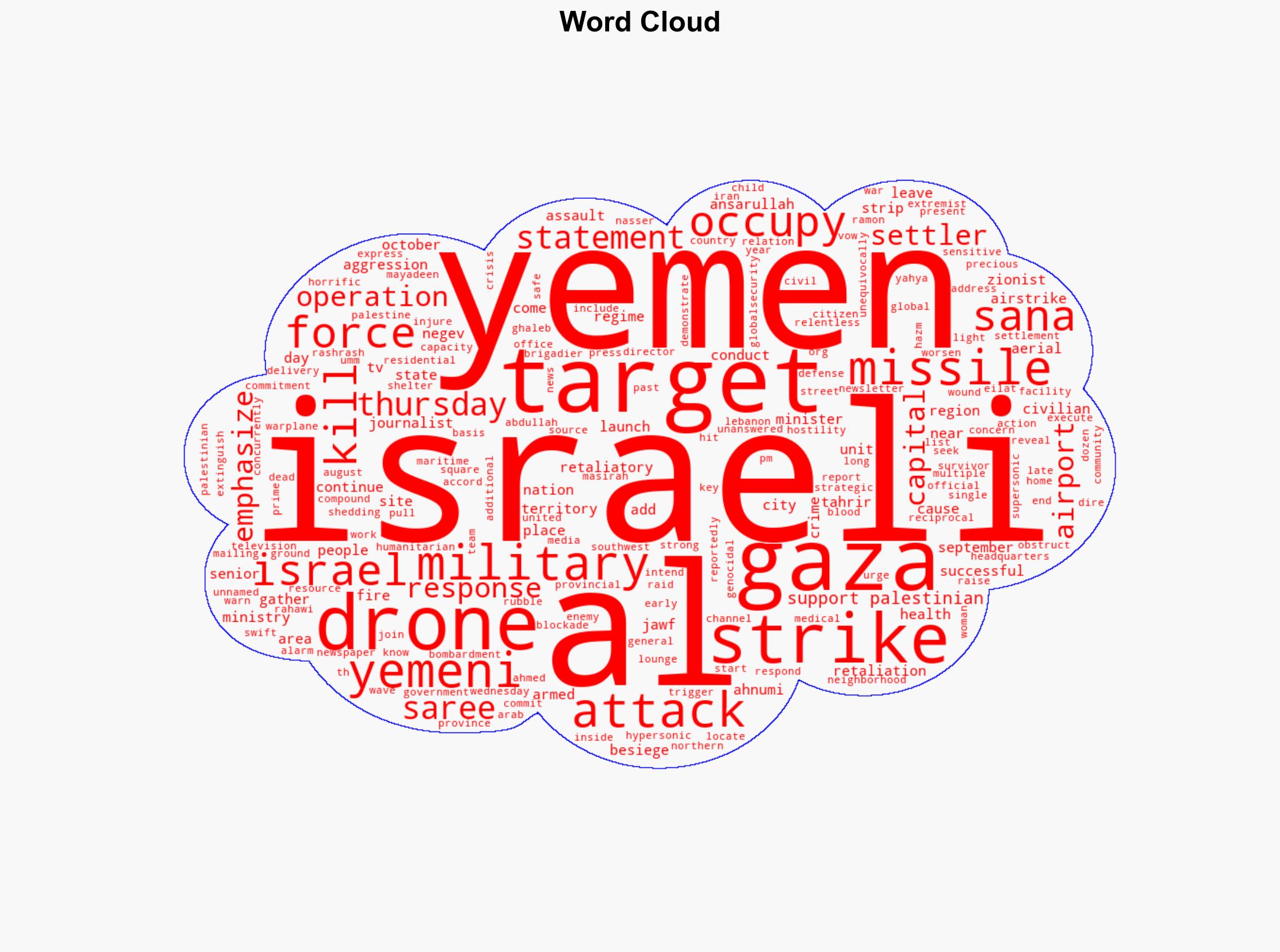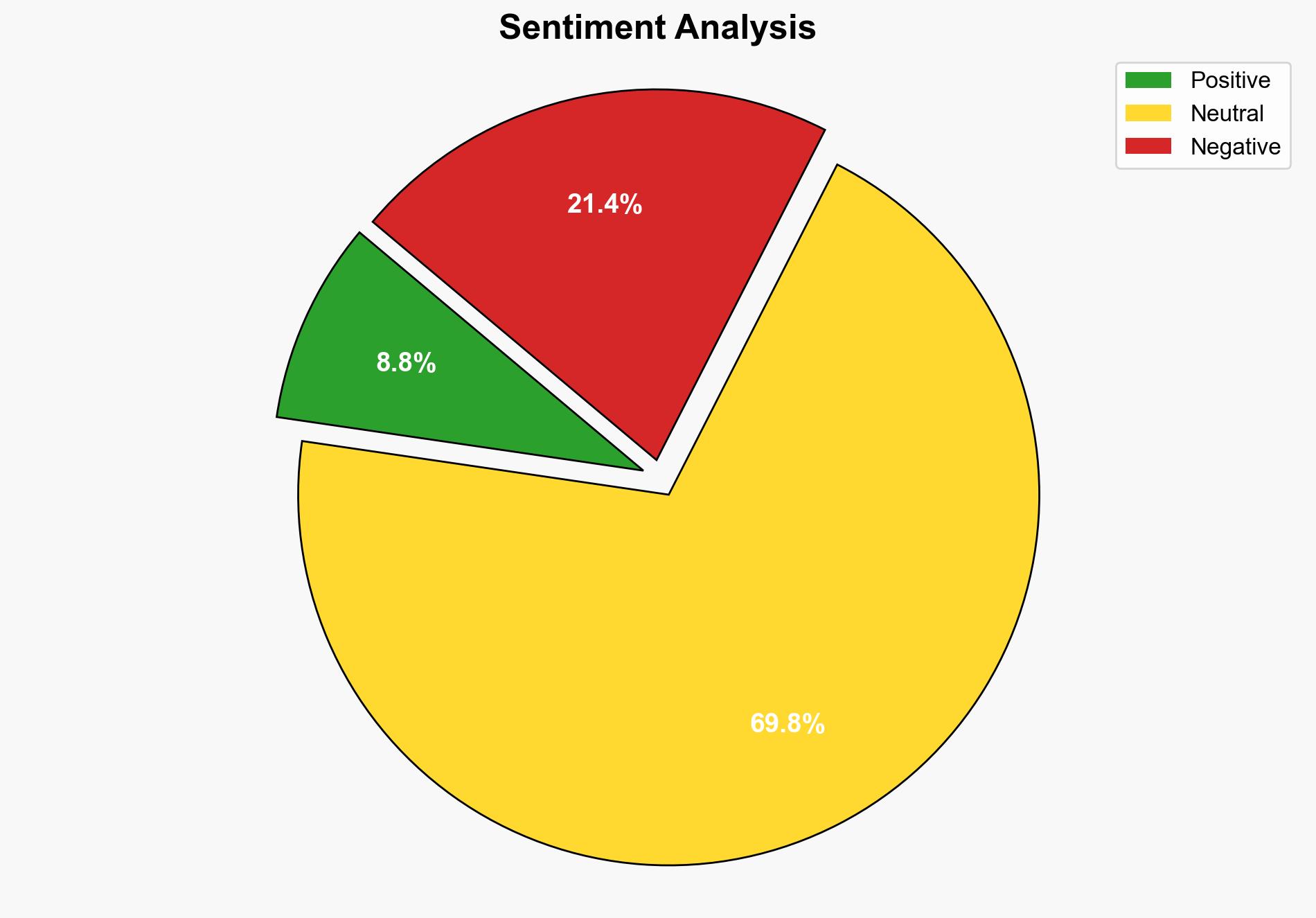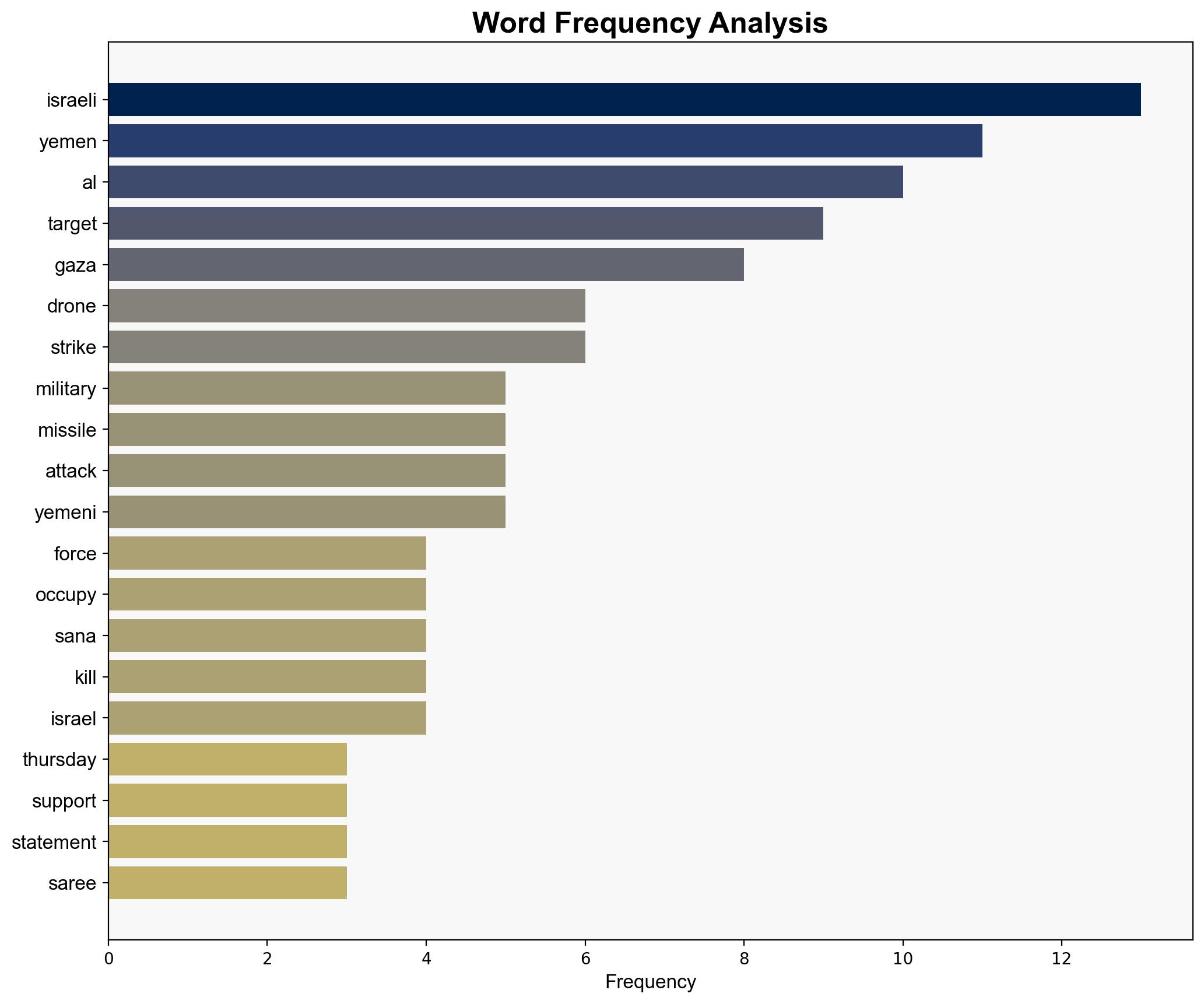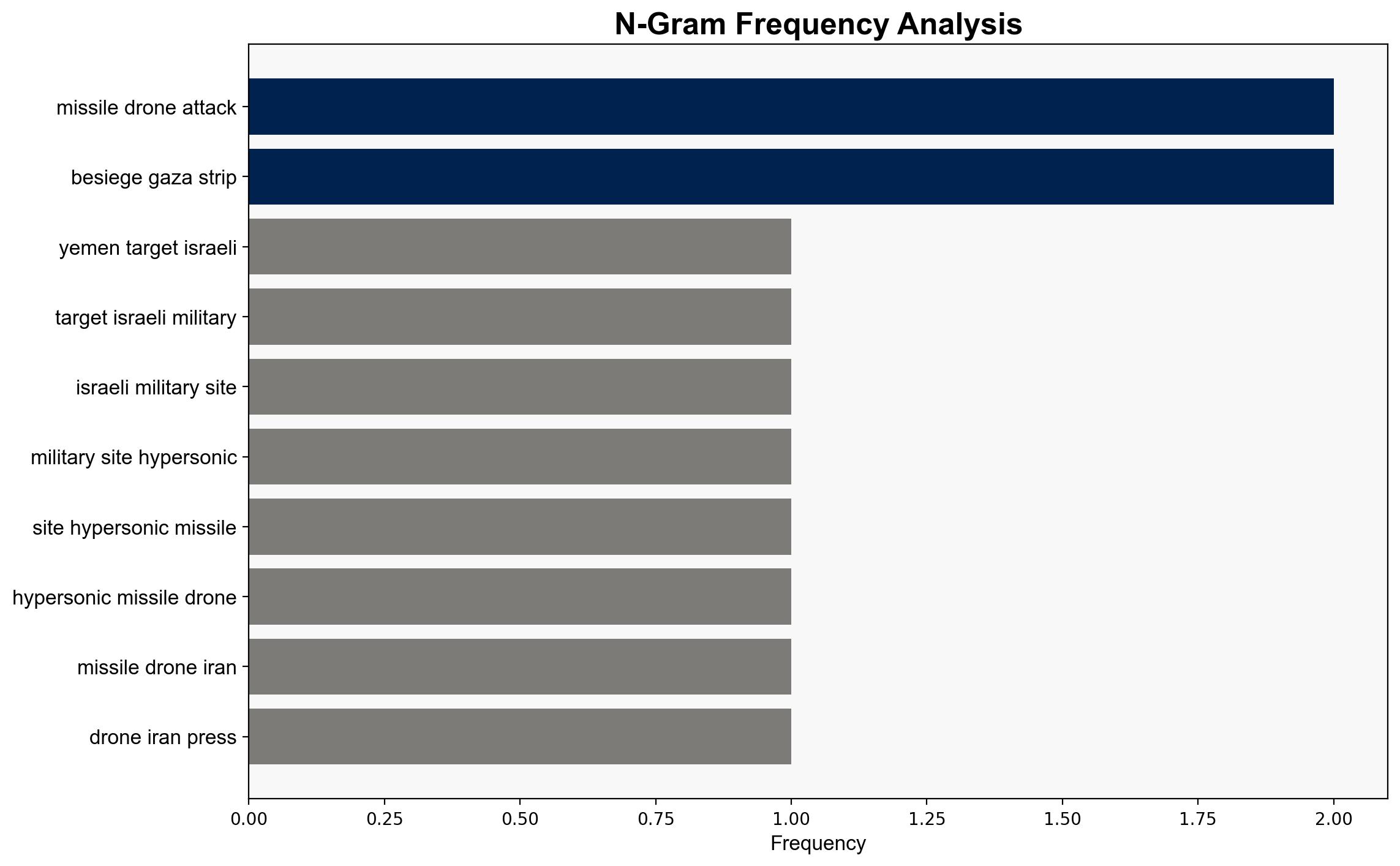Yemen targets Israeli military sites with hypersonic missile drones – Globalsecurity.org
Published on: 2025-09-12
Intelligence Report: Yemen targets Israeli military sites with hypersonic missile drones – Globalsecurity.org
1. BLUF (Bottom Line Up Front)
The most supported hypothesis is that Yemen’s missile and drone attacks on Israeli sites are a strategic maneuver to demonstrate solidarity with Palestinians and to retaliate against perceived Israeli aggression. Confidence level: Moderate. Recommended action: Increase monitoring of regional military activities and engage in diplomatic efforts to de-escalate tensions.
2. Competing Hypotheses
1. **Hypothesis A**: Yemen’s attacks are primarily a symbolic gesture to support the Palestinian cause and retaliate against Israeli actions in Gaza, leveraging the conflict to gain regional influence.
2. **Hypothesis B**: The attacks are part of a coordinated effort with Iranian backing to destabilize the region further and challenge Israeli military dominance, possibly as a proxy conflict.
Using ACH 2.0, Hypothesis A is better supported due to the explicit statements from Yemeni officials emphasizing retaliation and support for Palestinians. Hypothesis B lacks direct evidence of Iranian coordination in this specific instance.
3. Key Assumptions and Red Flags
– **Assumptions**: It is assumed that Yemen has the capability to independently conduct such sophisticated attacks without external assistance. There is also an assumption that these actions are directly linked to recent events in Gaza.
– **Red Flags**: The potential exaggeration of capabilities (e.g., hypersonic missiles) and the lack of independent verification of the attack’s success raise questions about the accuracy of the reports.
– **Blind Spots**: The absence of detailed intelligence on the exact nature of the coordination between Yemen and other regional actors like Iran.
4. Implications and Strategic Risks
– **Escalation Risk**: Increased military engagements could lead to broader regional conflicts involving multiple state and non-state actors.
– **Geopolitical Impact**: Potential for strained relations between Israel and neighboring countries, impacting peace processes and alliances.
– **Economic Consequences**: Disruption of trade routes and increased military spending could affect regional economies.
– **Cyber Threats**: Potential for cyber-attacks as a form of asymmetric warfare.
5. Recommendations and Outlook
- Enhance intelligence-sharing mechanisms with regional allies to monitor potential escalations.
- Engage in diplomatic dialogues with key regional players to de-escalate tensions and prevent further military engagements.
- Scenario Projections:
- Best Case: Successful diplomatic interventions lead to a de-escalation of military actions.
- Worst Case: Escalation into a broader regional conflict involving multiple state actors.
- Most Likely: Continued low-intensity conflict with sporadic military engagements.
6. Key Individuals and Entities
– Yahya Saree
– Abdullah al Ahnumi
– Ahmed Ghaleb
7. Thematic Tags
national security threats, cybersecurity, counter-terrorism, regional focus





